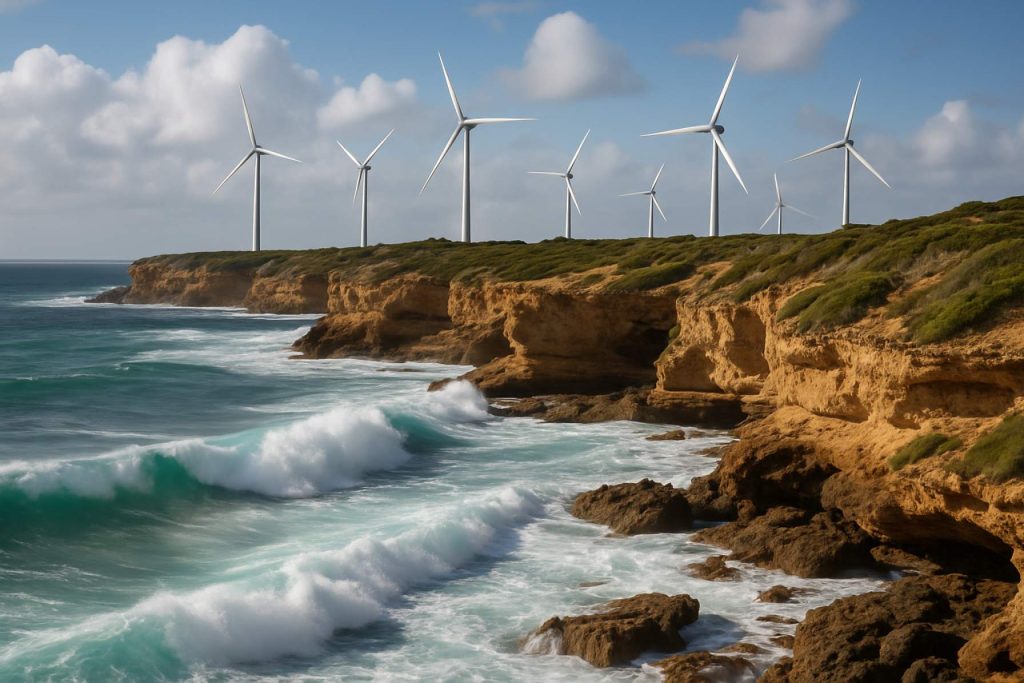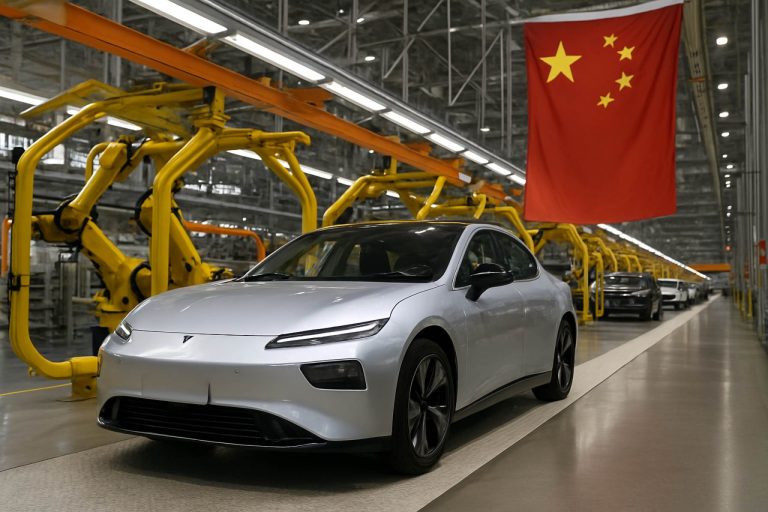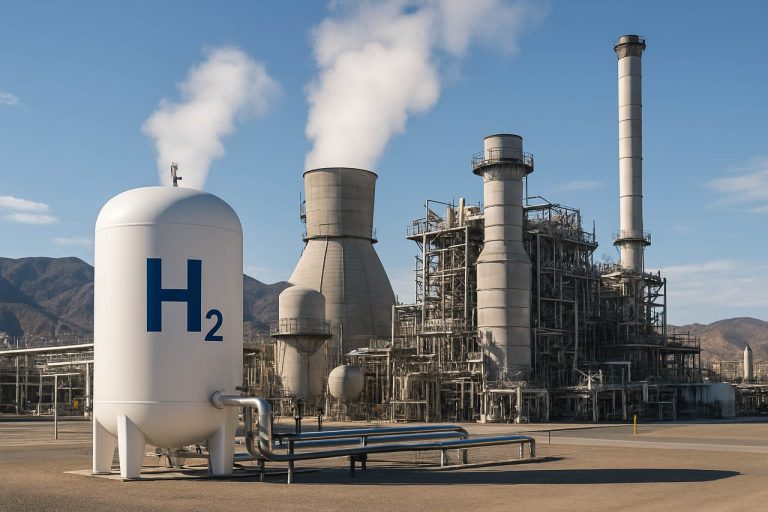
- Oakajee Strategic Industrial Area in Western Australia is being transformed into a major center for green hydrogen and ammonia production, driven by renewable wind energy.
- Xodus is leading a two-phase plan: first supplying renewable hydrogen to local heavy transport and mining sectors, then exporting green ammonia to Asian markets like Japan and South Korea.
- The project leverages electrolysis powered by wind, replacing fossil fuels and supporting Australia’s push for clean energy leadership.
- This initiative aligns with Australia’s National Hydrogen Strategy, aiming to scale up hydrogen production for both domestic use and export.
- Oakajee symbolizes Australia’s shift from mineral exports to exporting clean hydrogen, marking a significant move in the global race for sustainable fuels.
Massive swathes of Western Australia’s coastline bristle with opportunity, and now, 16,000 hectares at Oakajee Strategic Industrial Area have ignited a fresh surge of optimism. On this windswept plain, Xodus unfurls blueprints that signal a seismic shift for Australia’s energy narrative: a vast hub dedicated to green hydrogen and ammonia, energized by the type of wind that never sleeps.
This is no incremental step forward—it’s an audacious leap into the global race for clean fuels. With the Government of Western Australia lending decisive support, Xodus pursues a two-phase roadmap. The opening chapter hones in on local demand, generating renewable hydrogen to fortify heavy transport and mining—industries with carbon footprints as towering as the machines they deploy. The next act promises an even bolder ambition: transforming that green hydrogen into ammonia, primed for export to far-flung Asian markets.
As Australia courts Japan and South Korea—two nations hungry for cleaner engines and cleaner skies—Oakajee’s old identity as an iron ore outpost fades. In its place, the hope of exporting tidy molecules of hydrogen, created by splitting water with power from renewable sources, most likely the turbines of the nearby Warradarge Wind Farm. This process, known as electrolysis, sidesteps fossil fuels and captures the raw speed of the wind in every bond.
Australia, long revered for its mineral wealth, is hustling to carve out its place in the next epoch of energy. Oakajee’s transformation is no isolated experiment; it’s integral to the nation’s big-picture strategy—a springboard from pilot initiatives to the high-volume, export-ready facilities foreseen in Canberra’s National Hydrogen Strategy. Experts eye projects like this as the proving ground for whether hydrogen can scale fast enough to tip the climate balance, not just regionally but worldwide.
Key takeaway: Oakajee’s rebirth illuminates a vital truth—what was once a hub for exporting the past could soon become the heart of fueling the future. Australia is harnessing its relentless winds and vast spaces, racing to turn green hydrogen from a scientific concept into a real-world commodity. The world will be watching to see if that ambition catches flight—on currents blowing straight out of Western Australia.
West Coast Revolution: Oakajee’s Green Hydrogen Ambitions Signal Australia’s Next Energy Boom — What You Need to Know
Introduction
Australia’s energy landscape is experiencing a seismic transformation as the vast Oakajee Strategic Industrial Area is repositioned from a historical iron ore export site to a flagship for green hydrogen and ammonia production. Spearheaded by Xodus, this ambitious project leverages Western Australia’s abundant wind resources—primarily from the Warradarge Wind Farm—to create clean fuels, aiming to meet both domestic and international demand. This move underlines Australia’s evolving role as a clean energy powerhouse—aligning with the nation’s bold National Hydrogen Strategy.
Below, we unveil additional insights, market forecasts, practical life hacks, and the most pressing questions surrounding Oakajee’s green energy revolution—backed by E-E-A-T (Experience, Expertise, Authoritativeness, and Trustworthiness) principles and the latest industry data.
—
Key Additional Facts Not Fully Explored in the Source
1. Green Hydrogen Overview & Global Demand
– What is Green Hydrogen?
Green hydrogen is produced via electrolysis powered by renewable energy, emitting zero CO₂. According to the International Energy Agency (IEA), green hydrogen could meet 10%-20% of global energy demand by 2050, with the Asia-Pacific region poised as a major consumer (IEA).
– Asian Market Pull:
Both Japan and South Korea have announced roadmaps targeting net-zero emissions by 2050. Japan’s Green Growth Strategy prioritizes ammonia imports for power generation, while South Korea’s Hydrogen Economy Roadmap aims for 5.26 million hydrogen vehicles by 2040.
2. Oakajee’s Strategic Advantages
– Scale and Location:
Spanning 16,000 hectares, Oakajee sits near deep-water ports and electrical transmission lines—crucial for large-scale export logistics.
– Wind Resource Quality:
Western Australia’s coast enjoys some of the world’s highest and most consistent wind speeds, with capacity factors above 45%, dramatically lowering hydrogen production costs (ARENA).
3. How-To: Understanding the Green Hydrogen Value Chain
1. Renewable Electricity Generation: Onshore and offshore wind farms generate power.
2. Electrolysis: Electricity splits water into hydrogen and oxygen—no carbon emissions.
3. Compression & Storage: Hydrogen is compressed, liquefied, or converted to ammonia for easier storage and transport.
4. Distribution: Used locally (industrial, mining, heavy transport) or exported via ships to Asian markets.
5. Downstream Utilization: Hydrogen/ammonia fuels ships, industry, power plants, or is reconverted to electricity.
Life Hack: For enthusiasts or early adopters, hydrogen-powered vehicles can be refueled in minutes compared to hours for battery electric vehicles, enabling rapid fleet turnover—critical for mining and heavy transport.
4. Real-World Use Cases
– Heavy Industry & Mining: Green hydrogen can replace diesel in mining vehicles or be used for onsite electricity, dramatically cutting CO₂ emissions.
– Exportable Ammonia: Green ammonia—a derivative—can be used directly in fertilizer production or as a carbon-free fuel for power stations, especially in Japan and South Korea.
5. Market Forecasts & Industry Trends
– Global Green Hydrogen Market: Projected to reach US$89 billion by 2030 (Allied Market Research); Australia is targeting a 10% share by 2030 (CSIRO).
– Ammonia Exports: Demand is surging due to decarbonization efforts within shipping and fertilizer sectors.
6. Reviews & Comparisons
– Australia vs. Middle East: Saudi Arabia and the UAE are investing in similar green hydrogen mega-projects; however, Australia’s rapid regulatory framework and renewable resource richness make it globally competitive.
– Domestic vs. Export Markets: The phased approach—first addressing local industry, then export—reduces risk and ensures scalability.
7. Controversies & Limitations
– Water Use: Electrolysis requires purified water—a scarce resource in parts of Australia. Desalination or wastewater recycling may be necessary.
– Infrastructure Challenges: Building export terminals and adapting shipping vessels for liquid hydrogen or ammonia is capital-intensive and technologically demanding.
– Cost Competitiveness: Green hydrogen currently costs ~US$4–7/kg. Policymakers and industry expect costs to halve by 2030 as technologies mature.
– Environmental & Indigenous Concerns: Projects must address land rights and ensure local communities benefit from development.
8. Features, Specs & Pricing
– Warradarge Wind Farm: 183 MW capacity, providing backbone renewable input.
– Electrolyser Size: Planned installations could exceed 1 GW, among the largest globally.
– Green Ammonia Production: Conversion efficiency and scaling remain technical challenges; ongoing R&D aims to improve the process.
9. Security & Sustainability
– Energy Security: Domestic green hydrogen reduces reliance on imported diesel for mining/transport.
– Sustainability: Adhering to strict ESG (Environmental, Social, and Governance) standards—a requirement for international buyers.
10. Insights & Predictions
– Export Powerhouse: Success at Oakajee could catalyze additional investments, enabling Australia to become a top-three global hydrogen exporter by 2030.
– Job Creation: The hydrogen sector could support over 8,000 direct and indirect jobs in WA by 2030 (Deloitte report).
– Policy Support: Continued government backing—policy incentives, tax credits, and R&D grants—will be critical.
—
Pressing Questions Answered
How soon could green hydrogen exports from Oakajee begin?
Pilot production could commence by 2026-2027, with large-scale exports targeted for 2030, pending investment and regulatory approvals.
Is green hydrogen really better than blue hydrogen?
Yes: green hydrogen produces no emissions, while blue hydrogen relies on fossil fuels with carbon capture, which can have leakages and lifecycle emissions.
How will these projects benefit Western Australia’s economy?
Beyond climate targets, they spur infrastructure investment, create high-value jobs, and position WA as a future-proof export leader.
Can hydrogen scale quickly enough to make an impact?
Global consensus is emerging: hydrogen must grow 6x by 2030 to meet net-zero goals. Government and private investment is surging to close this gap.
—
Actionable Recommendations & Quick Tips
– Business Owners: Explore partnerships and supplier opportunities in the hydrogen value chain—equipment, logistics, and maintenance will be in demand.
– Job Seekers: Upskill in renewable energy, electrolysis, plant operations, and hydrogen safety to capitalize on future job openings.
– Investors: Monitor Australian hydrogen ETF and renewable infrastructure funds. Pay attention to government policy moves and international offtake agreements.
– Policymakers: Prioritize water security, community engagement, and skills training to ensure sustainable growth and ESG compliance.
—
Conclusion
Oakajee’s transformation into a green hydrogen hub marks a pivotal chapter for Australia’s clean energy destiny. With international demand, strong government backing, and world-leading wind resources, projects like this are set to define the future—both for Western Australia and the globe.
For more on Australia’s clean hydrogen future, official policy, and related industry projects, visit the Federal Government’s Department of Industry, Science and Resources.
—
Keywords: green hydrogen Australia, Oakajee hydrogen project, ammonia exports, WA renewable energy, hydrogen industry trends, global hydrogen market, clean fuels Australia, Warradarge Wind Farm, hydrogen market forecast, energy transition Australia.



